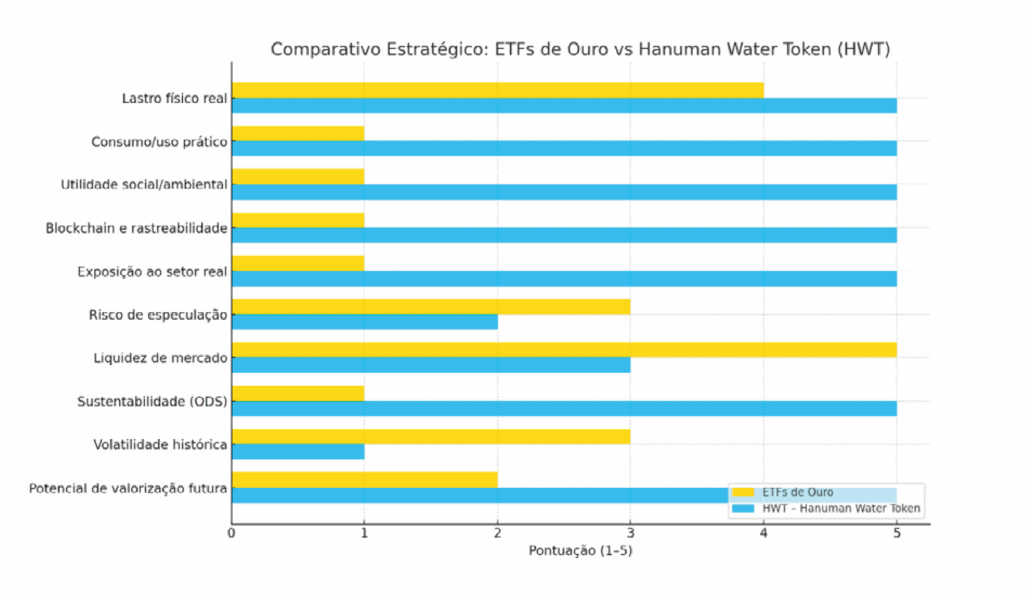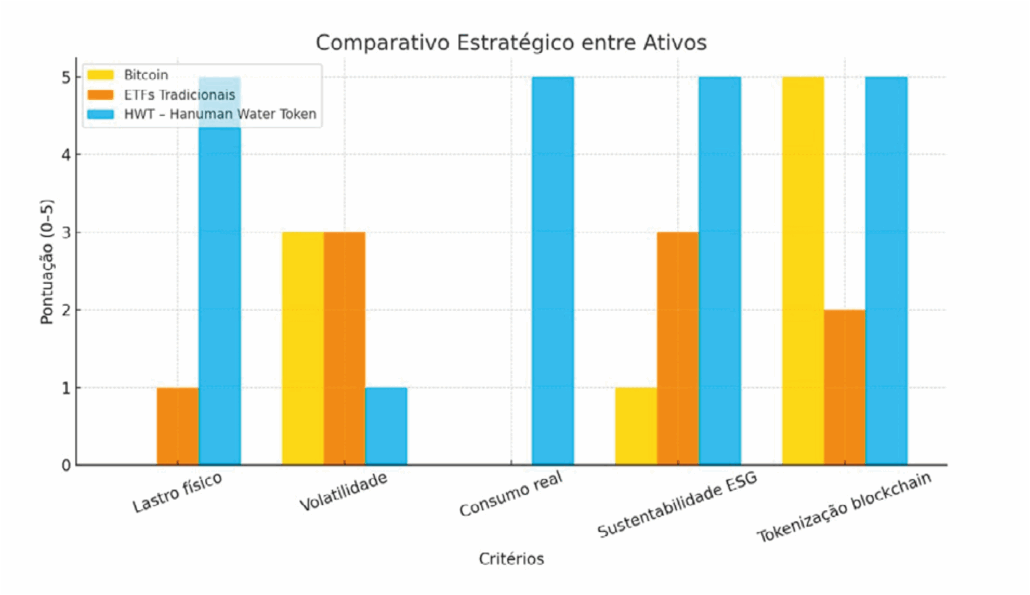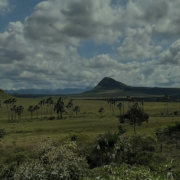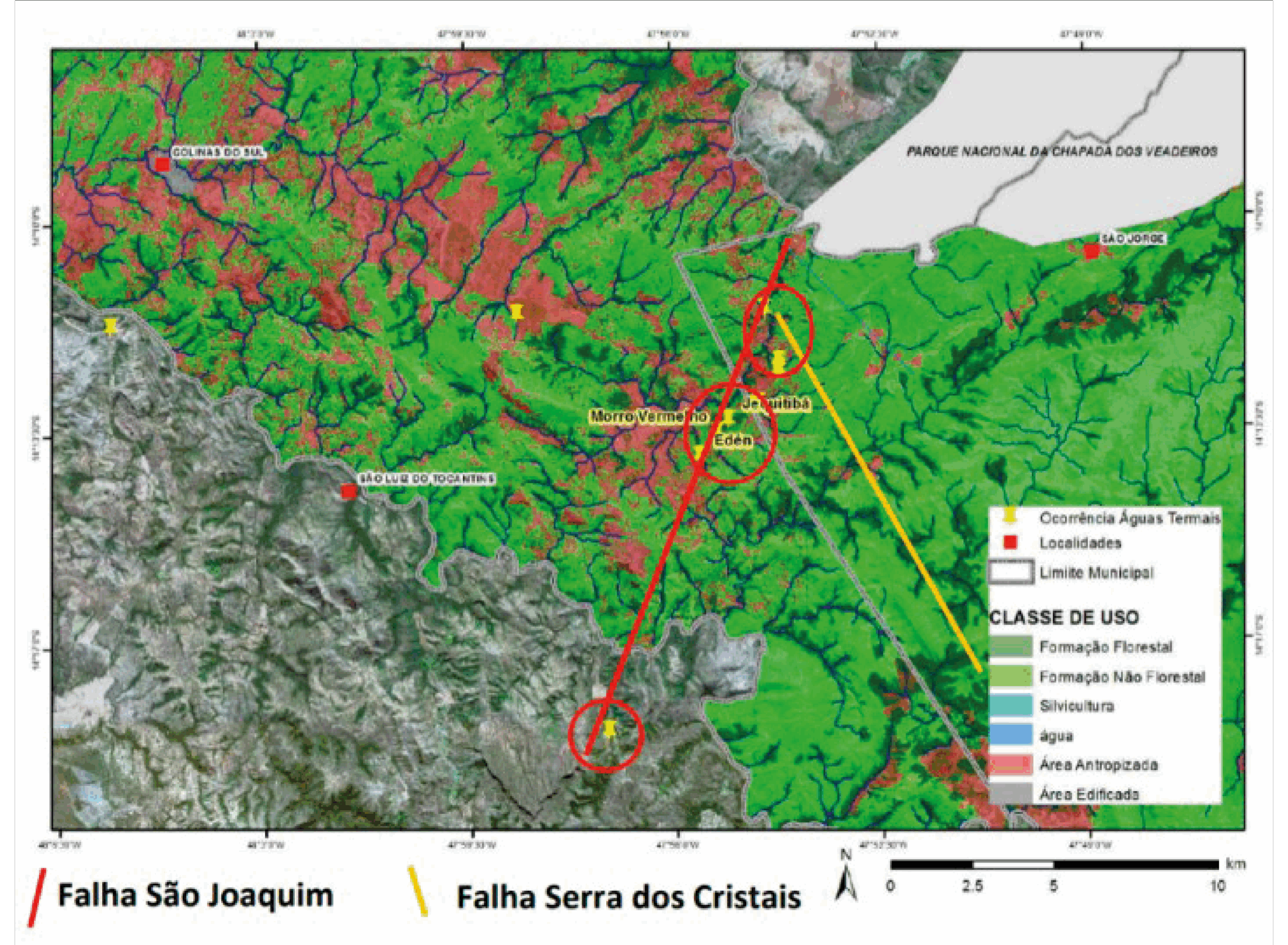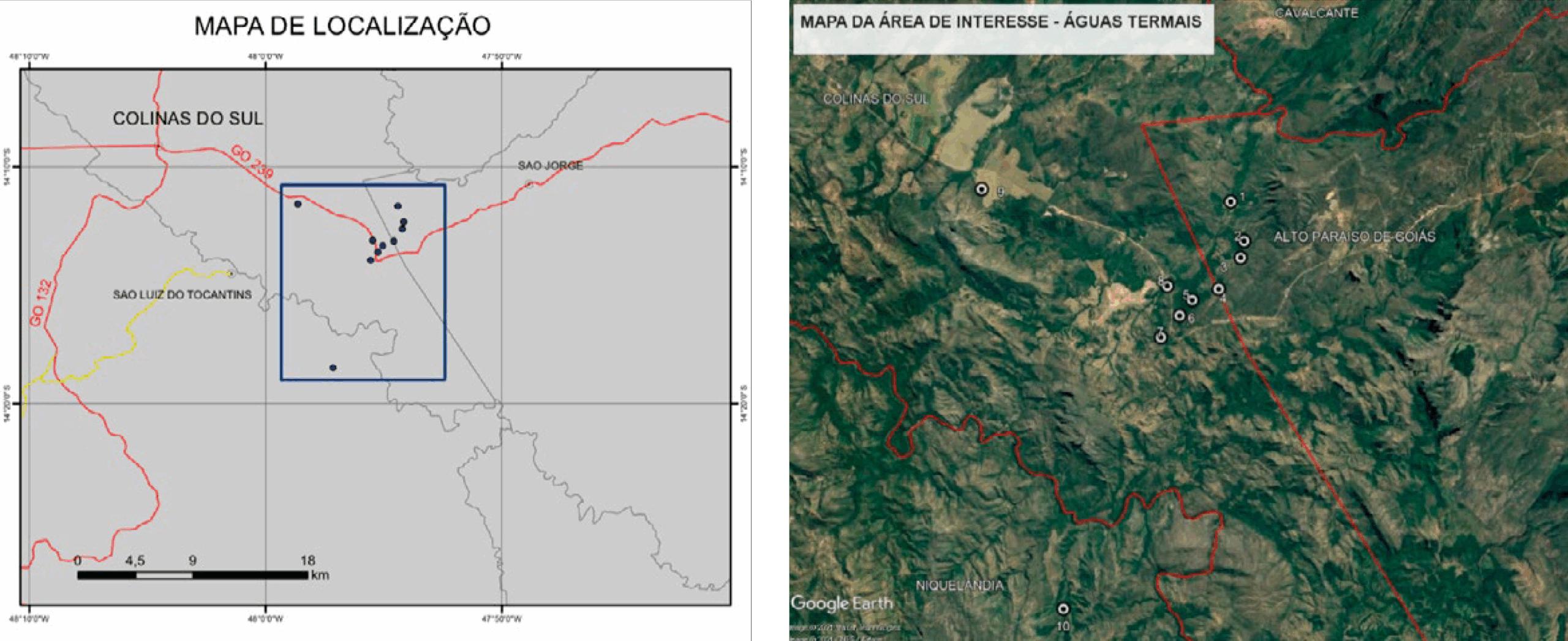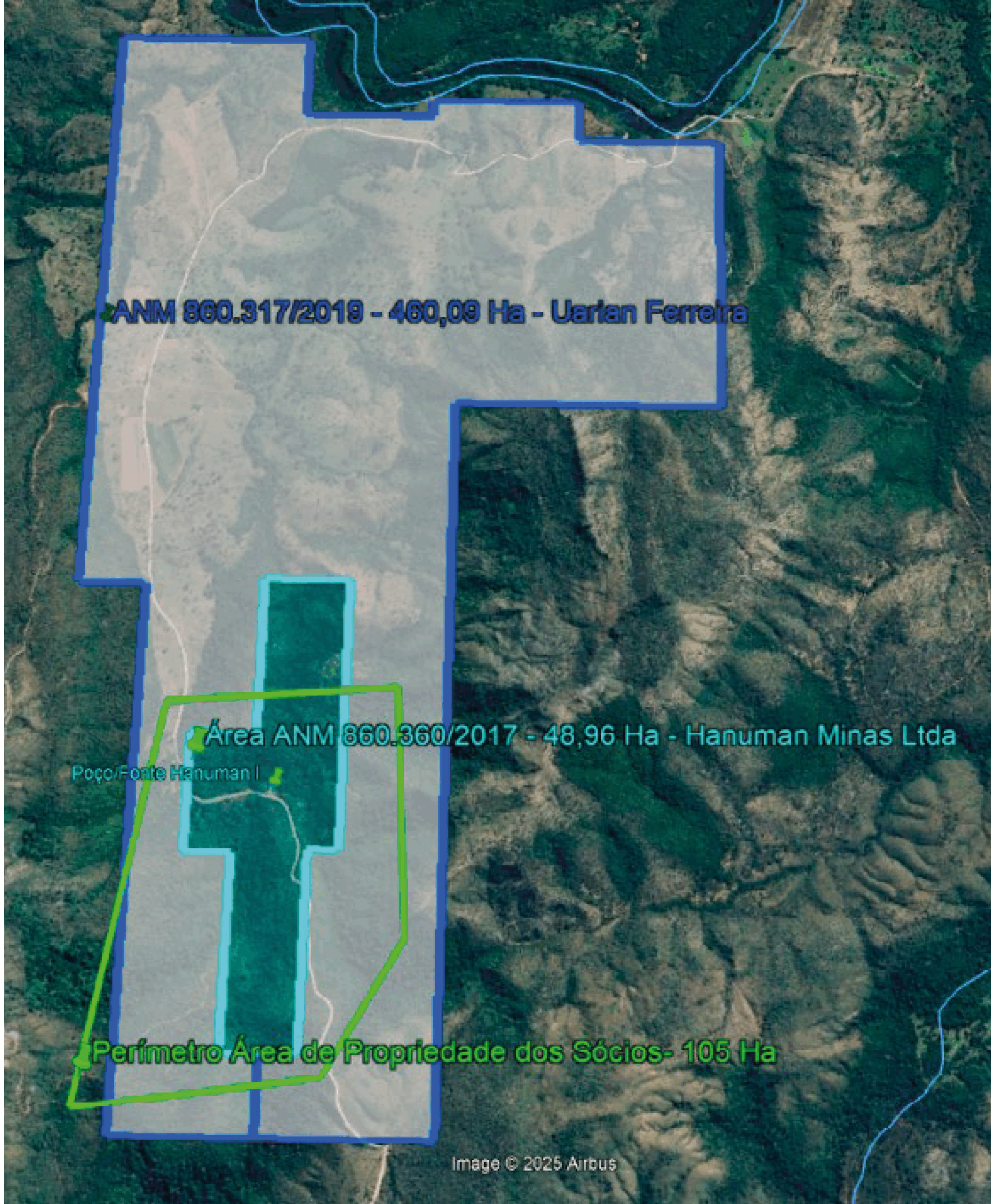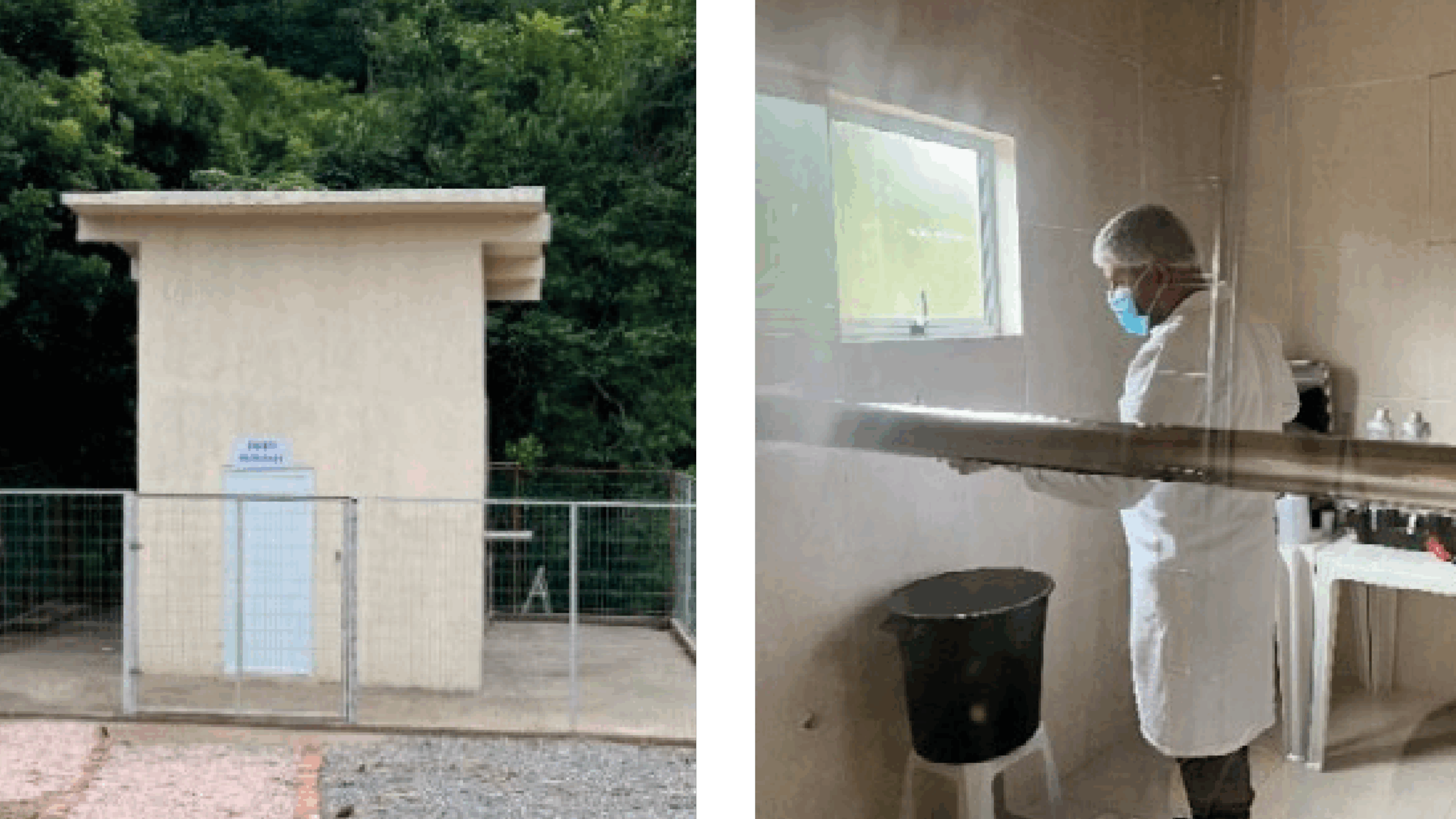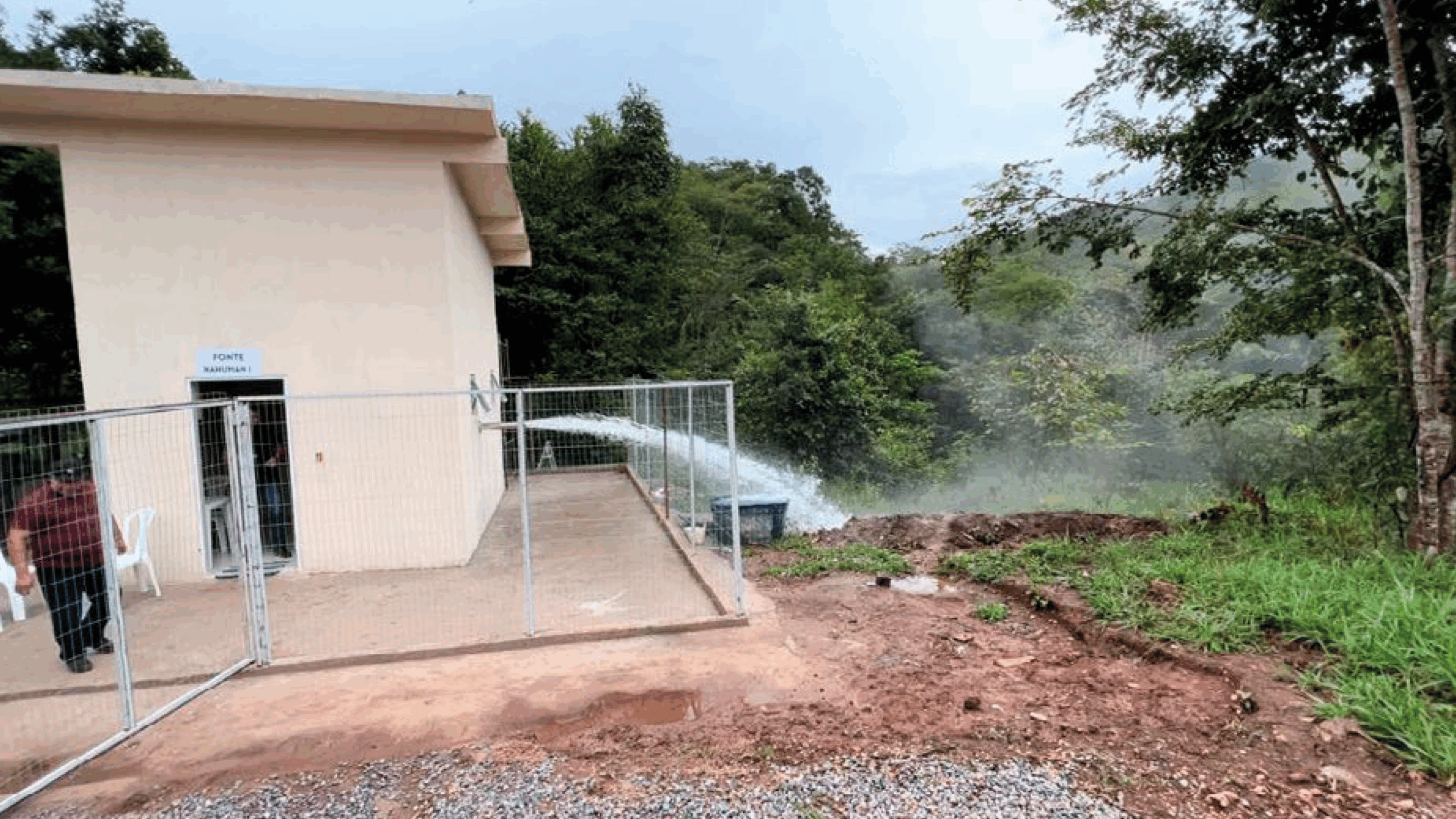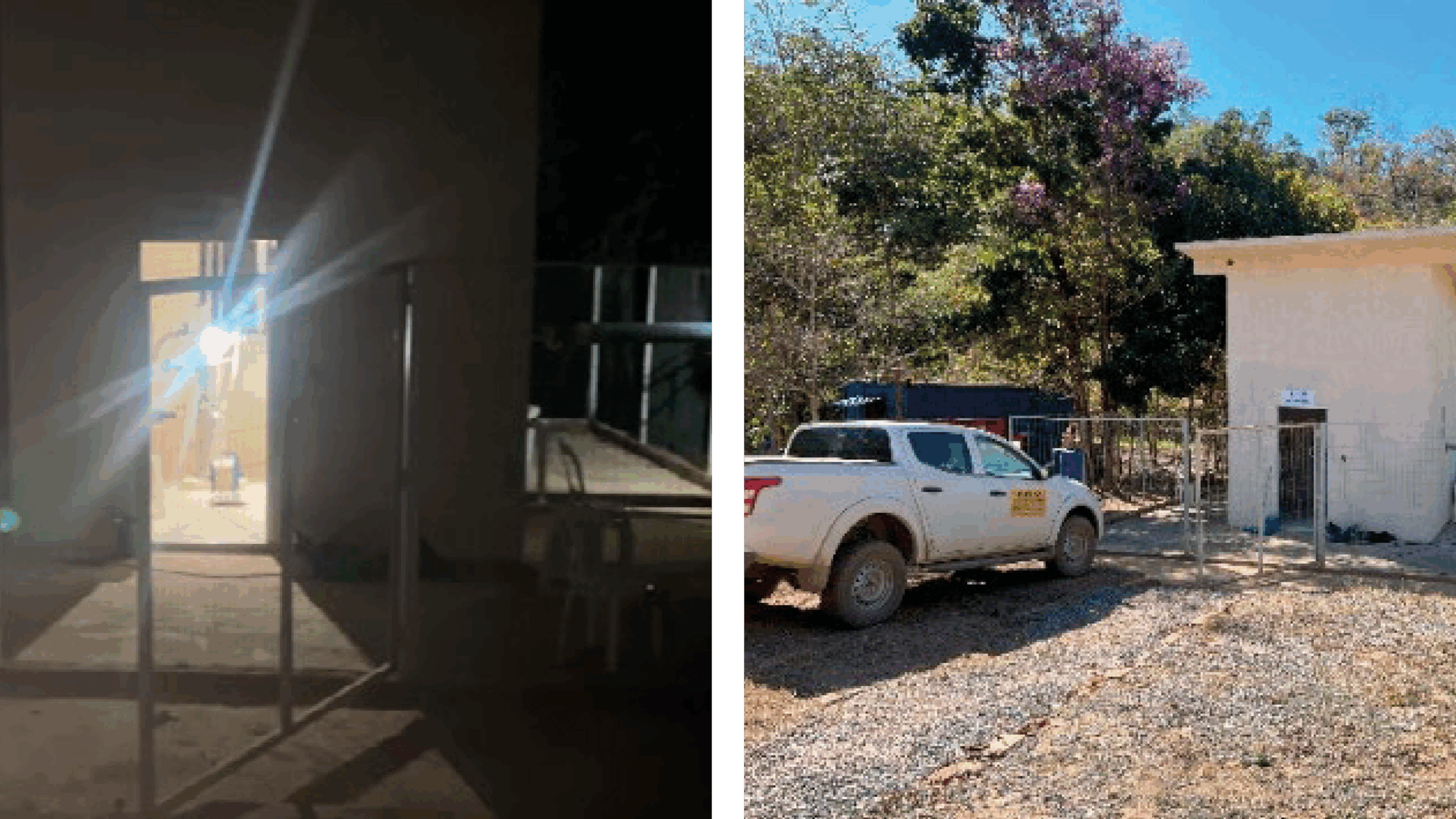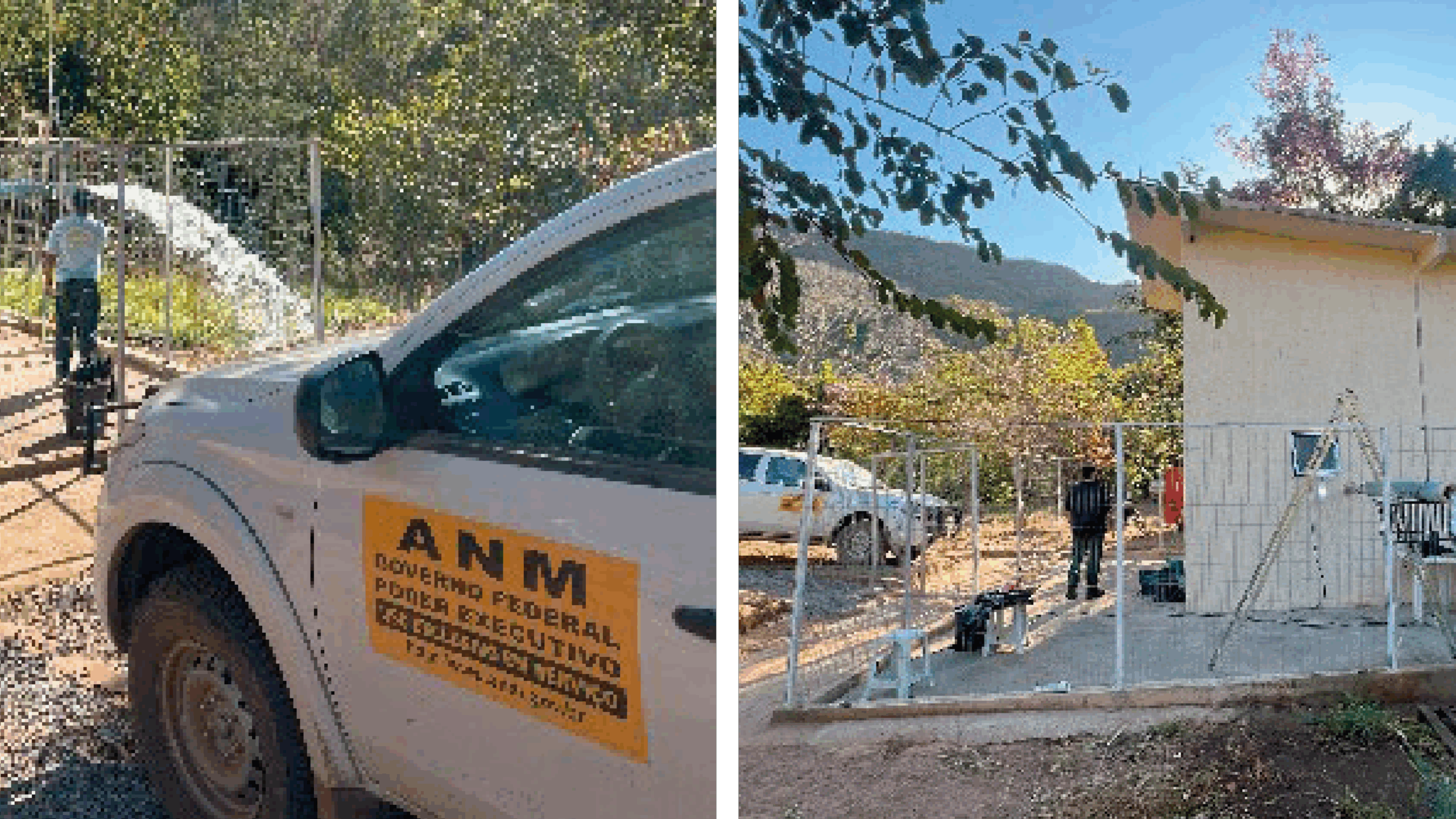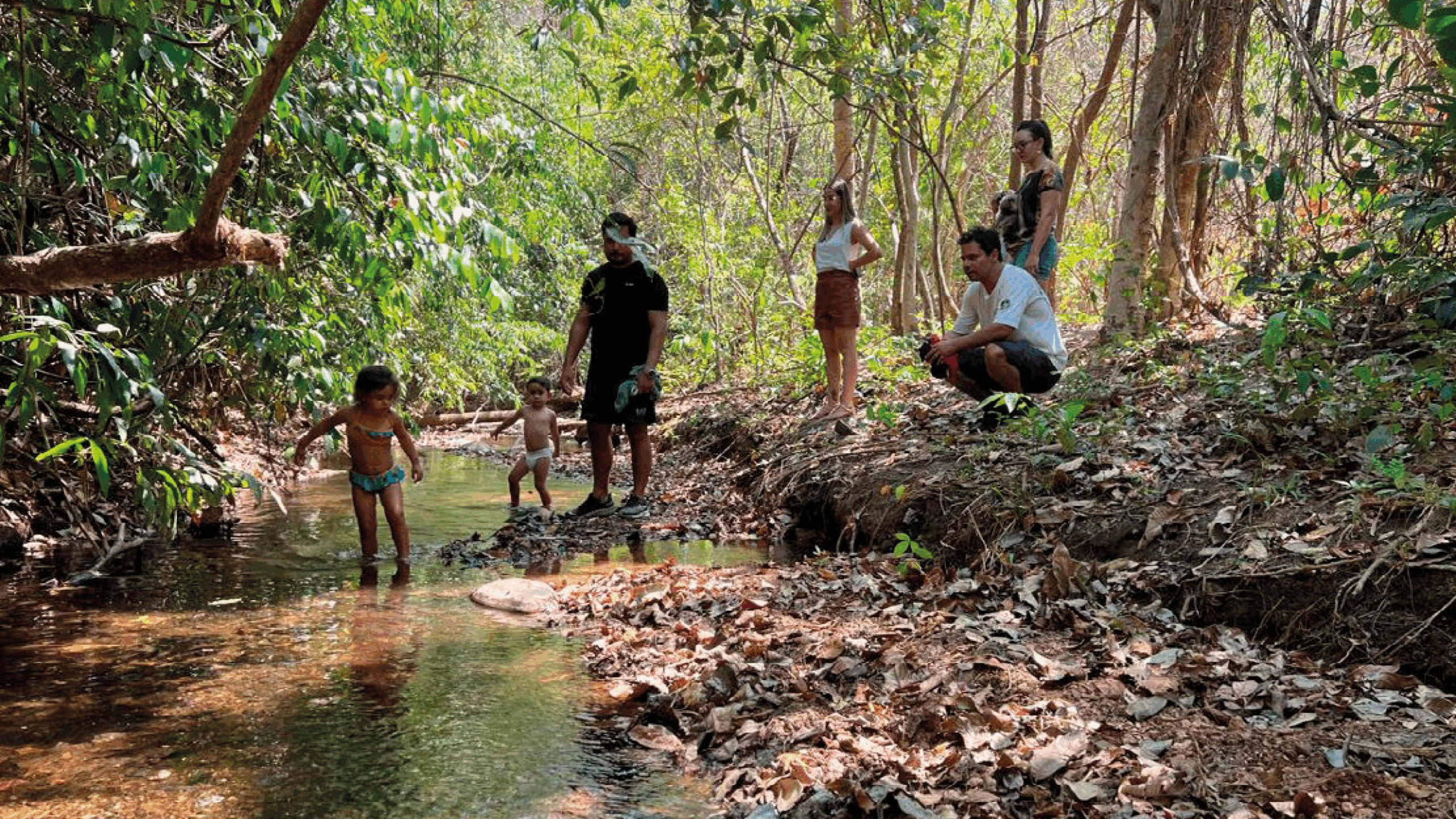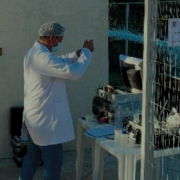Structured Memory, Quantum Potential, and a New Frontier in Liquid Intelligence
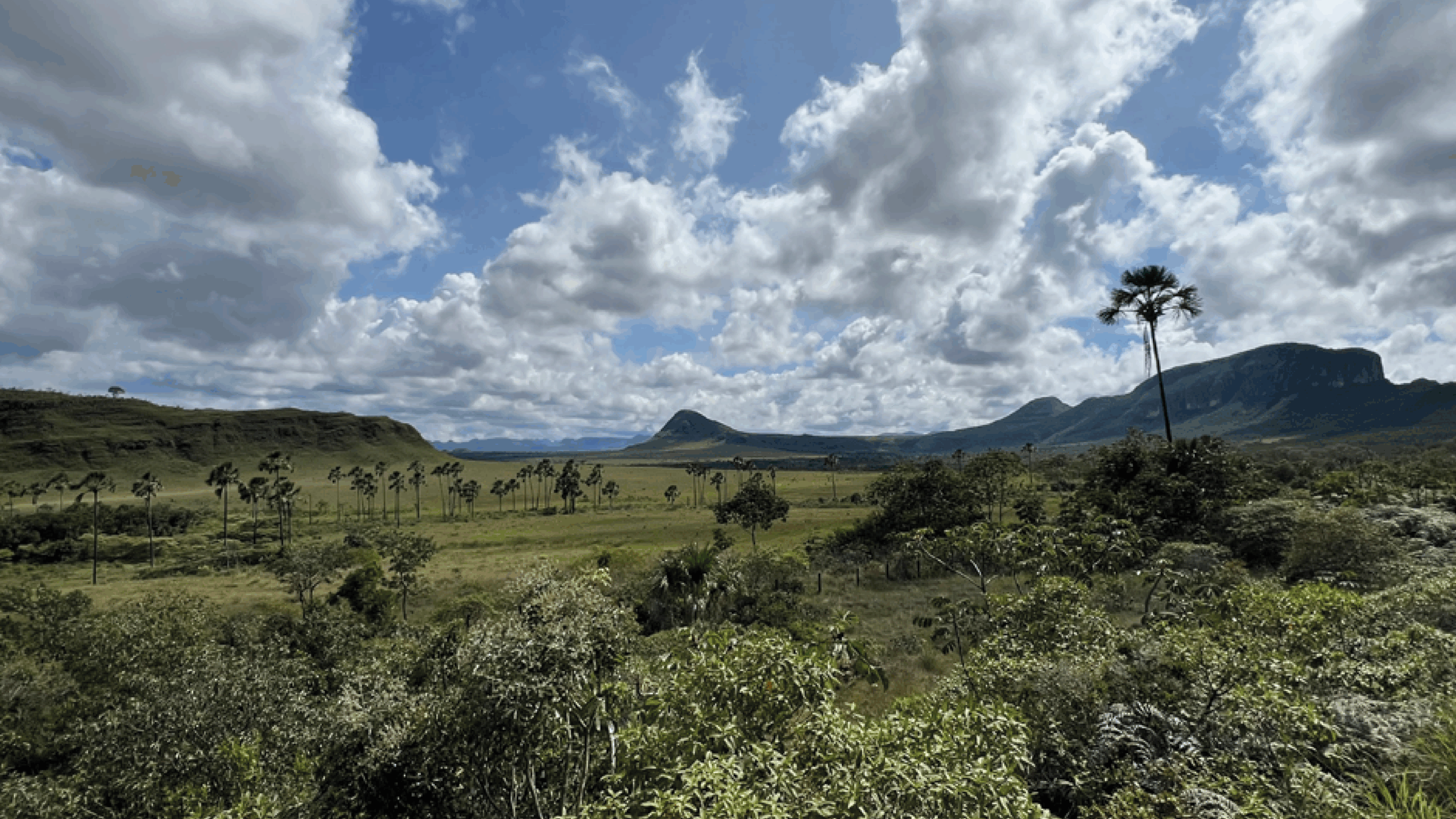
Maytrea Garden – Chapada dos Veadeiros National Park – Diluvial rainfall infiltration area that gives rise to the hyperthermal waters of the Hanuman Deposit (Photo by Uarian Ferreira)
Imagine discovering a water that connects the earliest moments of the universe to the frontiers of high technology. Formed from rainfall over 9,000 years ago in what is now the Chapada dos Veadeiros National Park — a UNESCO1 World Natural Heritage Site — this water seeped through deep geological faults, crossing layers of ancient rock and crystal deposits rich in quartz, beryl, tourmaline, and dozens of other piezoelectric minerals found in the region.
Rich in minerals and naturally balanced with an alkaline pH, Hanuman Water emerges at 42°C (107.6°F) from the Hanuman Spring — a geological treasure with the potential to revolutionize fields from medicine to advanced technology.
Hanuman Minas Ltda, holder of the mineral rights to the Hanuman Deposit and Spring I, seeks to unlock this potential by connecting Central Brazil with the cutting-edge research of global big techs in quantum computing and neurotechnology.
From Supernovas to Chapada dos Veadeiros: Water Born in the Stars

13.8 billion years ago, the universe was a chaos of particles. Now, in early 2025, a study published in Nature Astronomy2 revealed that water molecules originated in primordial supernovas 100 to 200 million years after the Big Bang. “These waters traveled through space and helped form planets like Earth,” explains co-author D. J. Whalen. The magazine Olhar Digital³ reported on the discovery in Brazil, highlighting its impact on astrobiology. Hanuman Water Encapsulates Crystals from a 1.5-Billion-Year Geology and Earth’s 4.54-Billion-Year History. Earlier, in 2011, NASA²-¹ had already announced the discovery of the largest water reservoir in the universe — a gigantic cloud of water vapor surrounding the quasar APM 08279+5255, located over 12 billion light-years from Earth.
Hanuman Water, named after a universal archetype of strength, protection, and a symbol of the spirit that guards this millennia-old resource, encapsulates the crystals of the 1.5-billion-yearold geology of the Chapada dos VeaImage: muratart/Shutterstock 4 deiros and the 4.54-billion-year history of the Earth. Analyses conducted by the Brazilian Geological Survey (CPRM)10 and the University of Brasília (UnB)11 confirm its hydrochemical properties and age: Carbon-14 and Tritium testing (a marker isotope from modern nuclear activity) prove that this water remained isolated for millennia, preserving its unique properties.
The region — formed even before the supercontinent Pangaea — is characterized by ancient rocks and intense geological processes, such as the formation of pegmatites4, which favor the crystallization of complex minerals. These phenomena were featured in Super Interessante magazine.
A study led by Dr. Aaron Cavosie and his team at Curtin University (Australia) found geochemical evidence of hydrothermal systems on Mars over 4 billion years ago, through analysis of zircon crystals in the Martian meteorite NWA 7034 (“Black Beauty”)5. This supports the idea that even beyond Earth, there were environments where interactions between liquid water and geothermal heat created potentially habitable conditions.
These discoveries reinforce the hypothesis that multimillennial mineral waters, like those from the Hanuman Deposit, also carry memories of deep, singular geothermal journeys.
A study in The Astrophysical Journal (2023, DOI: 10.3847/1538-4357/acaf9c) reinforces this cosmic connection. By analyzing ancient meteorites, researchers found hydrogen isotopes identical to those in terrestrial water, confirming that part of our water originated from stellar explosions.

Moon Valley – Chapada dos Veadeiros (Vitor Marigo/Getty Images
A Cosmic Connection and Possible Quantum Dance in the Crystals of the Chapada
In 2016, Alexander Kolesnikov7 from Oak Ridge National Laboratory, discovered that water confined within the nanospaces of beryl (a mineral abundant in the Chapada) exhibits “quantum tunneling” — where protons “jump” between positions without energy expenditure. Superinteressante magazine covered this in a feature on the “fourth state of water,” highlighting its revolutionary implications.
A 2022 Nature Communications8 study shows that structured water in nanoporous materials can maintain “quantum coherence” for microseconds — a timescale potentially relevant for rapid biological processes.
This 9,000-year geothermal path, under high pressure and temperature, may have granted Hanuman Water a unique molecular structure, with quantum-physical properties documented in studies like that of Nature Communications (2022).
Interaction with Piezoelectric Crystals: From Quantum Tech to Integrative Therapies
Hanuman Water’s natural journey through piezoelectric minerals such as quartz and beryl may make it an exceptional resource with applications ranging from quantum technologies (e.g., qubit cooling) to evidence-based integrative therapies, including biophotonic studies (Popp, 2002) and structured water modulation (Zheng & Pollack, 2003)9.
Bioelectrography of Hanuman Water
Between December 2024 and March 2025, pharmacist and bioelectrographer Carlos de Moraes Júnior, from São Paulo, conducted two bioelectrographic analyses — one initial12 and one complementary13 — of Hanuman Water, collected directly from Spring I in the Chapada dos Veadeiros, Goiás, under ANM process no. 860.360/2017. Using the Milhomens Standard equipment (Model 9L-1), which records energetic emissions via gas ionization, he examined samples extracted at 15- and 90-day intervals.
Preliminary results revealed luminous halos dominated by blue tones — associated with Yin balance in Chinese philosophy — along with traces of magenta and yellow-orange hues. These were interpreted by Moraes Júnior as indicative of potential energetic conductivity and influence on psychic and cognitive aspects.
These observations, though exploratory, suggest that Hanuman Water may exhibit distinct energetic properties, potentially applicable in integrative therapies, preparation of natural extracts (such as homeopathic remedies and flower remedies), and even neurocosmeceuticals. Additionally, its balanced alkalinity (pH 7.2–8.1) and unique mineralization, resulting from natural filtration through piezoelectric deposits, open pathways for functional beverage markets and gourmet cuisine, with potential sensory and nutraceutical benefits.
While bioelectrography is still considered an alternative technique not yet validated by mainstream science, the consistent energy patterns observed highlight the singularity of Hanuman Water, aligning with hypotheses of molecular structuring and quantum coherence proposed in recent research (e.g., Nature Communications, 2022). To validate and expand these findings, integration with conventional analytical methods — requiring substantial investment — and AI-assisted analysis is essential. Proceeds from the Hanuman Water Token pre-sale will help unlock the next stages of discovery — enabling technological applications and positioning Hanuman Water at the frontier of innovation and planetary regeneration.

Bioelectrography 15 days after collection at the Spring. Bioelectrography 90 days after collection at the Spring.
Images captured from 3 mL samples in 10 mL glass test tubes, using Fujicolor 135 mm film, ISO 400.
Micro-Lightning and the Chemistry of Life and the Brain
Recent studies published in Science Advances (2025) and in the Journal of the American Chemical Society14 demonstrate that water microdroplets can generate electrical discharges — the so-called micro-lightning — capable of initiating complex chemical reactions, including the formation of amino acids.
Considering that Hanuman Water naturally interacts with countless piezoelectric minerals along innumerable geological fractures and nanofractures, it is possible that analogous conditions exist along its underground path, suggesting a natural potential for unprecedented electrochemical reactions.
Order, Vibration, and Quantum Coherence: Hanuman Water in the Age of Qubits and Liquid Interfaces
Qubits — the units of quantum computing — are highly sensitive to thermal fluctuations. Recent research explores how “structured materials” can protect them. A study published in Nature Materials15 demonstrated that quartz resonators reduce noise in superconducting qubits, acting as vibrational shields.
With a conductivity potentially modulated by the crystals of the Chapada, the mineralized water from the Hanuman Deposit emerges as an intriguing system for investigating molecular structuring effects intended for cooling and stabilizing quantum systems.
Physicists at St. Louis University created a temporal quasicrystal in diamond, as described in Physical Review Letters16 – a structure that “pulses” without external energy, like a clock that runs on its own. Olhar Digital17 covered the discovery with the headline: “Physicists create new phase of matter in the center of a diamond.”
The convergence point between these discoveries lies in the concepts of order, vibration, and quantum coherence.
Just as temporal quasicrystals maintain consistent pulsation due to their internal structure, it is believed that Hanuman Water, through its interaction with piezoelectric minerals during its geothermal journey, maintains specific vibrations and ordered structure — which may explain its “memory” and its capacity to store and transmit energetic information.
- In Summary: Can Hanuman Water Be Considered “Quantum Water”?
“Quantum water” is not yet a formal category in traditional science, but it is used in emerging, therapeutic, and inte- 8 grative contexts to describe waters that: a) Exhibit a coherent or ordered molecular structure; b) Interact with vibrational or electromagnetic fields (natural or induced); c) Exist in quantum coherent states or display distinct bioinformational properties; d) Are technologically processed or “activated” (e.g., by laser, sound, magnets), or naturally structured through contact with piezoelectric crystals — such as Hanuman Water.
Current data already indicate that Hanuman Water’s interaction with piezoelectric minerals may give rise to uncommon molecular arrangements, similar to what is called “interfacial” or “structured water” (also known as “EZ water” – exclusion zone water, a term proposed by Gerald Pollack), an environment conducive to phenomena such as quantum tunneling, as demonstrated by Kolesnikov. Not all structured water is quantum, but the unique and geothermal origin of Hanuman Water from the Chapada dos Veadeiros may create the right conditions for this state.
in which Hanuman Water would act as a mediator between the human brain and living biochips, is currently being developed in a separate article due to its transformative potential and relevance.
In any case, any extraordinary attributes popularly assigned to this water are not mere exaggeration or mysticism, but rather a scientific extrapolation based on measurable physical properties, published analogies, and potential innovative applications. The consciousness of water, as an emerging concept in science and culture, is only beginning to be explored.
Multivalent Use: From Cosmetics to Space Applications
Already classified by the Brazilian National Mining Agency (ANM) as “Fluoridated Hyperthermal Mineral Water at the Source,” Hanuman Water has also passed tests conducted by natural cosmeceutical producers and floral remedies laboratories located in Alto Paraíso de Goiás.
In January 2025, researcher Cláudia do Valle, founder of Florais do Cerrado, personally visited the spring and collected samples for use in her line of flower remedies and vibrational compounds. Having lived in the Chapada dos Veadeiros for nearly 30 years, Cláudia operates a laboratory with more than 300 flower essences extracted from the flora of the Cerrado biome. In March, she sent a letter to Hanuman Minas attesting to the “exceptional vibrational properties” of the water, expressing interest in the product and requesting a minimum 10-year supply agreement.
The delivery term and guarantee of water supply are essential” — says Cláudia, who plans to expand her business by adding to her current product line the vibrational energy and hyperthermal, multimillennial marketing appeal of the water.
Hanuman Minas seeks to align its business model with the principles of the New Economy — distributive and sustainable — prioritizing benefits for all productive chains directly or indirectly linked to its operations in the region. To achieve this, it already partners with the OSCIP (Civil Society Organization of Public Interest) Pulsar Vida20 which will lead the implementation of productive arrangements involving the cosmeceutical sector, natural beverages and foods, native fruit cultivation, and multipurpose infrastructure throughout the Chapada region — with initial attention to launch in Garimpinho Village, near the source — including centers for integrative medicine (aligned with the Brazilian Unified Health System – SUS), as well as nature-based sports and tourism.
Since 2017, the principles and proposals for the sustainable development of the region’s hot springs have been laid out in the Chapada dos Veadeiros Thermal Springs Project/Concept21and22.
Cláudia Valle, founder of Florais do Cerrado
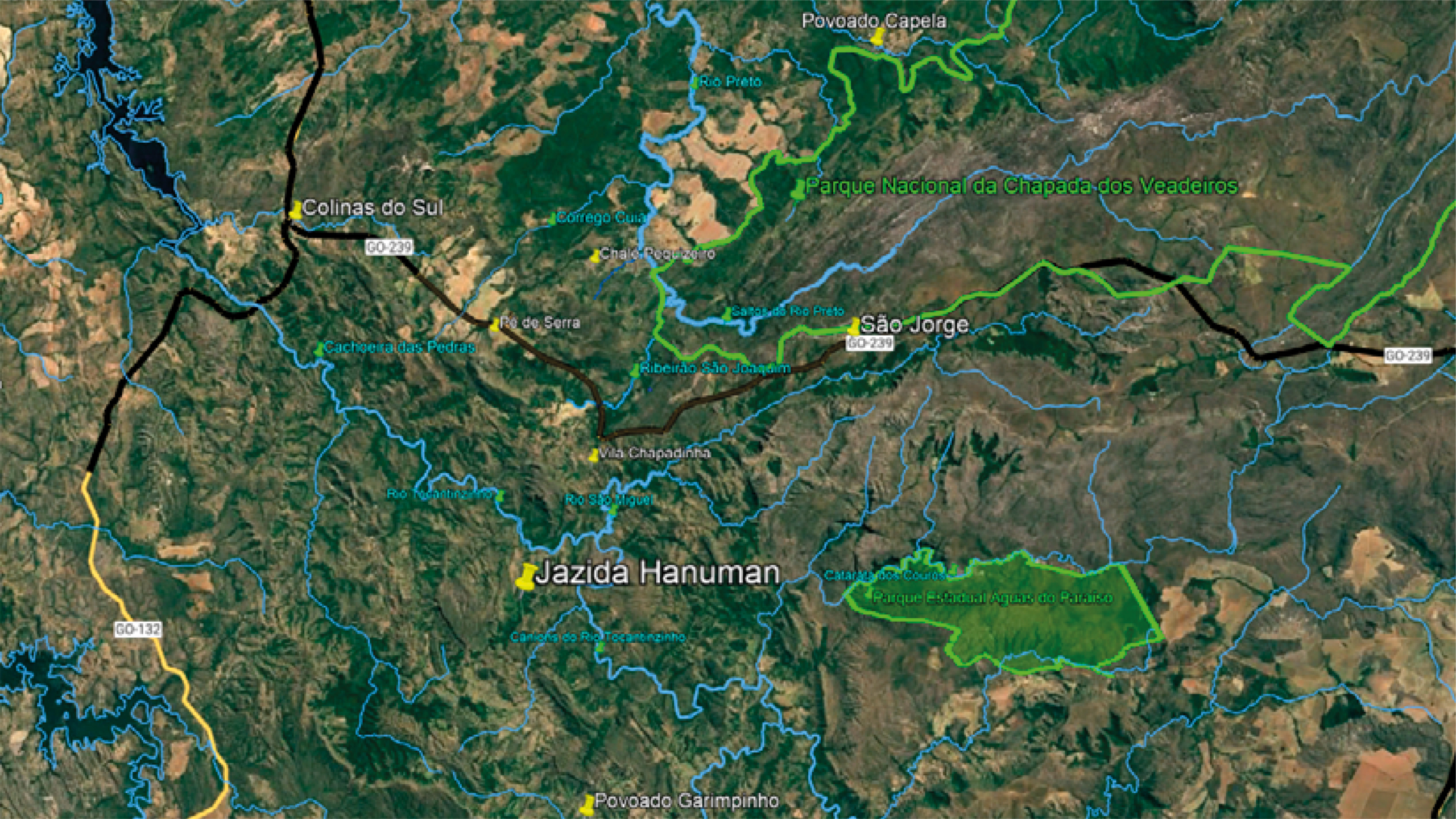
Location of the Hanuman Deposit in the Chapada dos Veadeiros – 26 km from São Jorge, the gateway to the Chapada dos Veadeiros National Park, and 24 km from the Águas do Paraíso State Park
Citizen Science and AI: The Role of the Public in Transforming Realities
Artificial Intelligences can analyze data collected by ordinary citizens, identify patterns, and transform intuitions or local observations into validated scientific knowledge.
The empirical observations of tourists, entrepreneurs, and residents of the Chapada — such as the water’s “revitalizing energy” — are now being corroborated by AI algorithms. This article is concrete proof that AI, when used with honesty, precision, care, ethics, and perseverance, has the power to positively transform socio-environmental and economic realities.
Hanuman Minas has already developed plans to fund a multidisciplinary scientific group dedicated to the study and research of the water’s properties. While still lacking the necessary resources, the company has begun sending invitations to institutions and big tech firms, offering partnerships for research, testing, and application of its water.
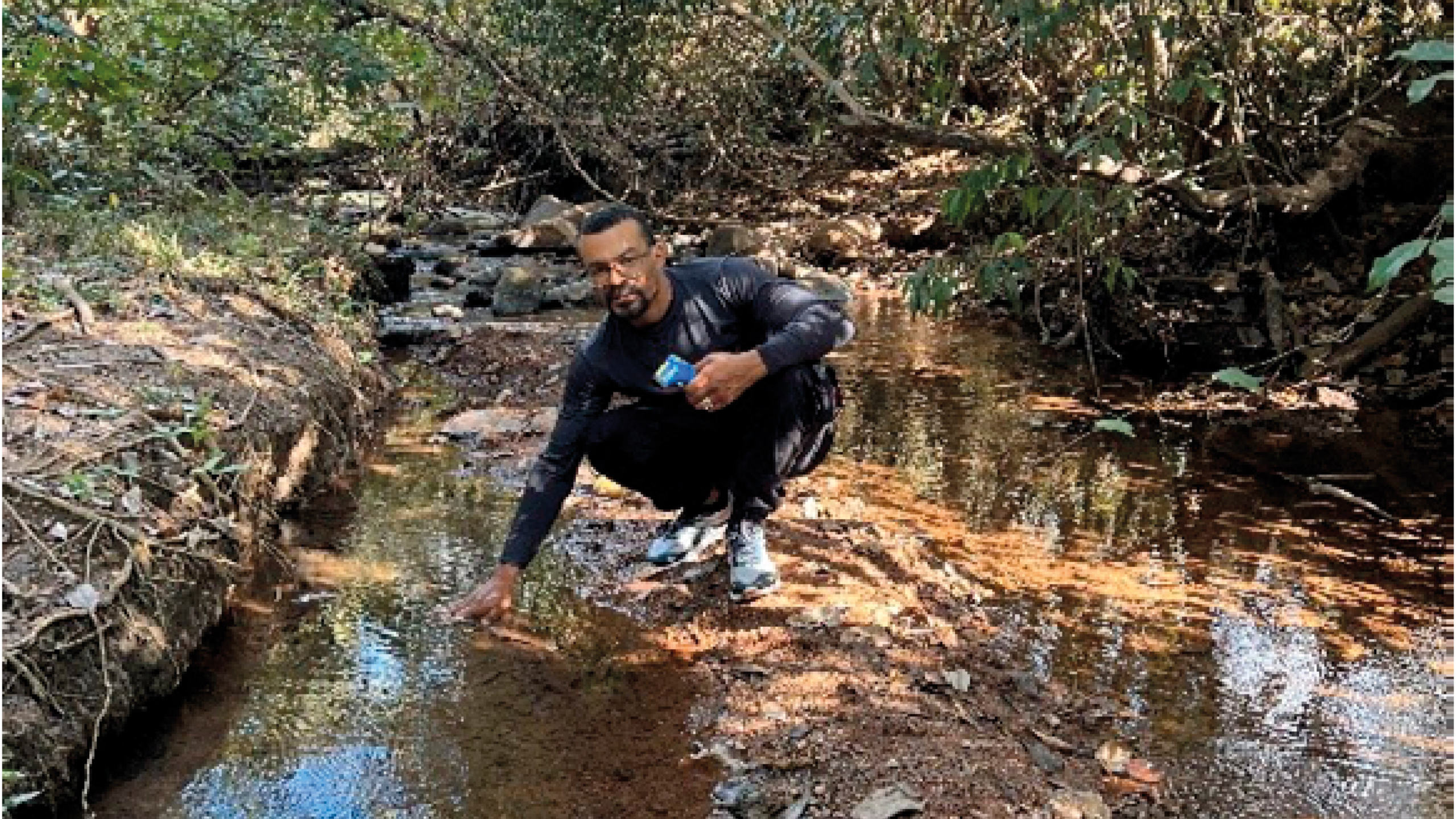
In a report for Jornal Opção, journalist Nielton Soares went to check the water temperature at the deposit
The Geological Fault That Enables Thermal Springs in the Chapada
The Hanuman Deposit is part of a system of thermal springs along the São Joaquim Geological Fault, which stretches for approximately18 kilometers and is located at the border of the municipalities of Colinas do Sul, Alto Paraíso, and Cavalcante. Since 2012, this area has been under registered mineral research through the Chapada dos Veadeiros Thermal Springs Project and has also been studied by professors from the Institute of Geosciences of the University of Brasília (UnB).
Numerous academic publications have addressed the region, including an article in the prestigious scientific journal Groundwater for Sustainable Development, titled “Hydrochemical and age constraints of Chapada dos Veadeiros geothermal reservoir, central Brazil.”11 The study was authored by geologist Tassiane Junqueira, in collaboration with PhD professors from UnB’s Institute of Geosciences and the Federal University of Goiás (UFG): José Eloi Guimarães Campos, Marco Antônio Caçador Martins Ferreira, Flávio Henrique Freitas Silva, and Jeremie Garnier. In that publication, the Hanuman area is referred to as TOC01 or Group 3.

Hydrogeology images of Hanuman Water from the PNCV to the Deposit – Detail of the São Joaquim Geological Fault – Final Research Report – Geologist Cristiane Moura
The mining research identified three major groups of thermal waters along the São Joaquim Fault Line, spanning the municipalities of Alto Paraíso, Colinas do Sul, and Niquelândia. Radiocarbon dating revealed ages of 1,200, 2,300, and 9,000 years, each with distinct temperatures and hydrochemical signatures
The oldest, most mineral-rich, and most alkaline group (pH 7.2 to 8.1) corresponds to the Hanuman Deposit (Group 3). The first well (Hanuman Spring I) was completed in early 2024, with a production capacity of 1,330 cubic meters per day, totaling 485,000 m³ per year.
This production was verified by the Brazilian National Mining Agency (ANM) and supported by geologist Sebastião Peixoto, a former ANM director who, in the 1990s, worked with the Federal Public Ministry of Goiás to impose limits on thermal exploitation in the spa town of Caldas Novas, in southern Goiás.
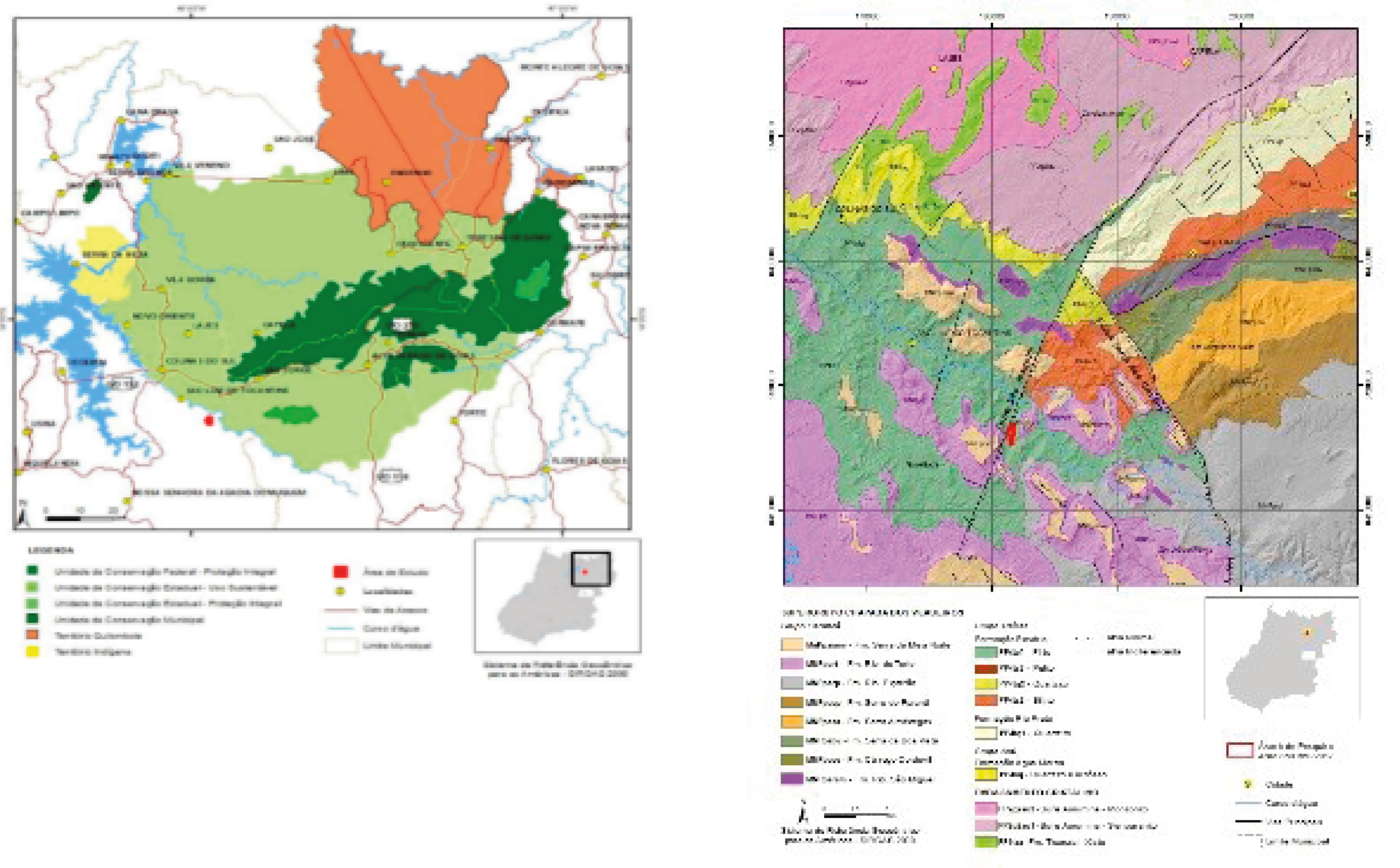
The Cosmogony of the Avá-Canoeiros and the Ramayana in the Chapada dos Veadeiros
There are many legends and stories related to the hot springs of the Chapada dos Veadeiros. One of the most well-known comes from the Avá-Canoeiro Indigenous people, who dominated the region until the mid-19th century. They believed that thermal waters were gifts from the gods, endowed with powers to heal, protect, and strengthen the tribe, and used them in rituals of healing, empowerment, and preparation for battle.
Although the naming of the deposit poetically dialogues with the Indian epic Ramayana, the identity of Hanuman Water is rooted in the stories of the land from which it springs: the Chapada dos Veadeiros and its ancestral wisdom. Here, Hanuman is understood as the universal guardian of living waters — a symbol of a protective spirit present in all cultures.

Hanuman, more than a cultural reference, represents the archetype of the guardian of water — the one who serves, protects, and connects. For Hanuman Minas Ltda, it is the symbol of the spirit that inhabits the Chapada dos Veadeiros and delivers to the world a liquid, millennia-old, cosmic, and planetary legacy (Image: Ninassarts – depositphotos.com)
Innovation: Blockchain Sales and the Hanuman Water Token (HWT)
For transparency and security in water-related transactions, the mining company will adopt a blockchain-based smart contract model — the same technology used in Bitcoin — which will allow full traceability from source to final consumption.
The Final Research Report (2023), signed by geologist Cristiane Oliveira de Moura (IG-UnB), states that the aquifer has a renewable reserve of 12 million m³ per year. Even 100 meters away from the activated well (Hanuman Spring), water continues to bubble up naturally at 42°C, just as it has for over 9,000 years. These discoveries are just the beginning.
The company is launching a pioneering model: the pre-commercialization of water via blockchain through the Hanuman Water Token (HWT). Each token guarantees the right to 1 liter of water from the Hanuman Deposit, with flexibility for bottled water consumption or industrial use (e.g., cosmeceuticals, beverages, food products, etc.).
Despite some logistical challenges — such as 14 kilometers of unpaved road from highway GO-239 — and the potential for regulatory licensing delays, full-scale industrial bottling is expected to begin in 2028, focused on meeting high-end demand.
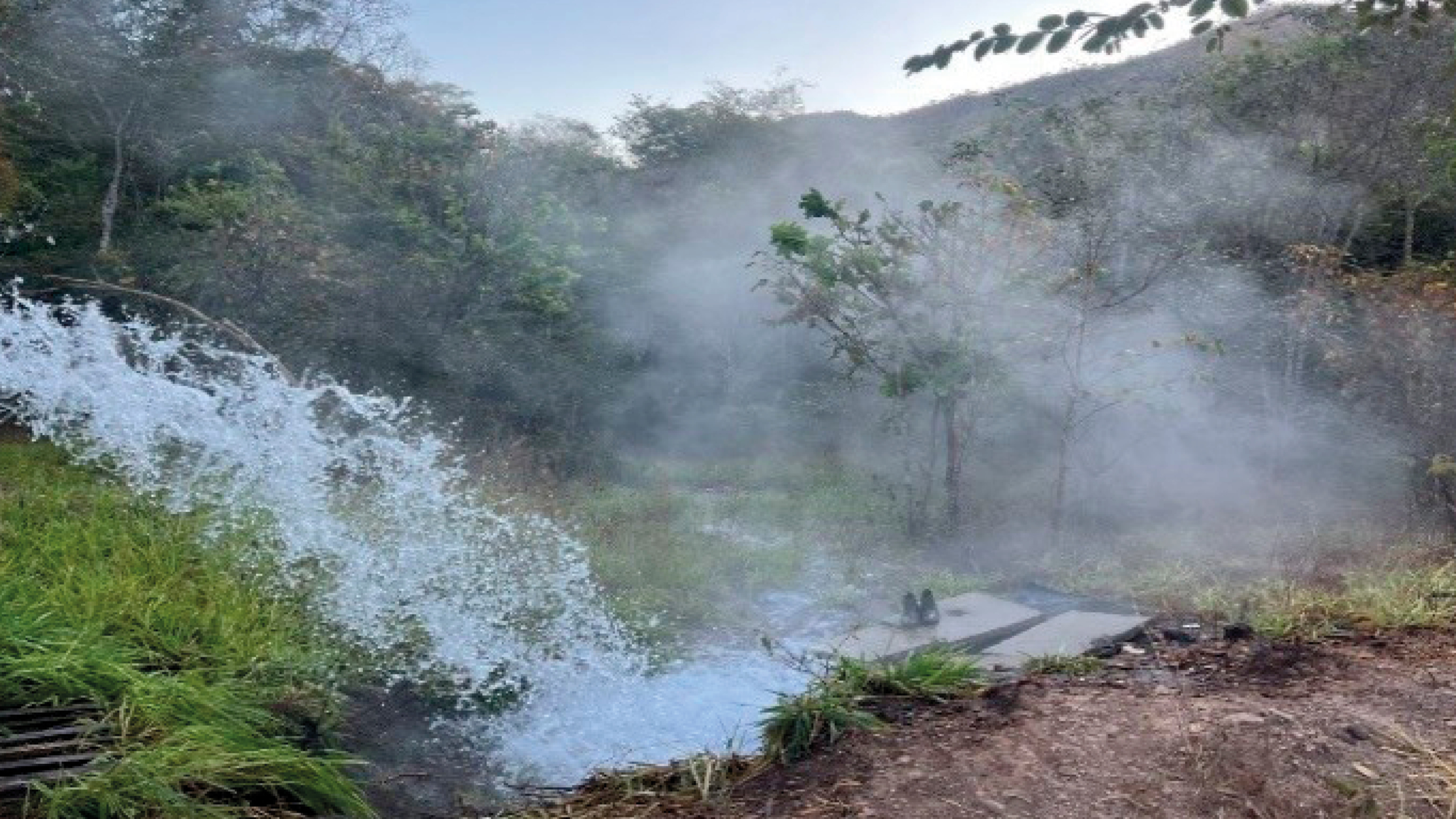
During the pre-operational phase, the company will launch an initiative to pre-reserve 100 million HWT tokens, corresponding to 100,000 m³ of water, or 20% of the annual production capacity of Hanuman Spring I. This initiative will limit the number of tokens per buyer to ensure equitable and sustainable access.
According to the WHO, the suggested human water intake is 30 to 40 mL per kg per day. A person weighing 75 kg and consuming 3 liters of water per day — about 90 liters per month — would need 1.08 m³ per year, or 1,080 tokens to meet their annual consumption.
The cosmeceutical sector is expected to lead token purchases, as 1 m³ of water can yield up to 3,300 units of 300 mL spray bottles.
The HWT does not offer financial returns or profit sharing. It is solely a utility token that guarantees future access to a physical product, and does not constitute a security or investment vehicle. It is available exclusively to residents and companies based outside of Brazil. Token acquisition will be subject to contractual terms available by the end of May on the website www.hanumanwater.com. The unit price in the first pre-sale phase will be 2 US dollars per token.
From the living depths of Central Brazil, in the Chapada dos Veadeiros, emerges an ancient and intelligent resource — a business model that may illuminate and guide the future. Mother Earth, giver of what we were, what we are, and what we may yet become, still insists on us.
(**) Uarian Ferreira is a multidisciplinary attorney, editor, and author of several books. He is the founder of www.amarbrasil.org.br and, since 2012, has held mineral rights over the São Joaquim Geological Fault. He is the creator of the Chapada dos Veadeiros Thermal Springs Project, an independent researcher, and managing partner at Hanuman Minas Ltda.
(*) This article was produced with the assistance of AI systems: GPT-4, DeepSeek, GROK 3, and Perplexity. Special thanks to Caroline Soares Freitas for her thoughtful revision and contribution to the refinement of the English translation
Author’s Definitions:
- Hanuman: More than a cultural reference, represents the archetype of the guardian of water — one who serves, protects, and connects. For Hanuman Minas Ltda, it is the symbol of the spirit that inhabits the Chapada dos Veadeiros and delivers to the world a liquid, ancient, cosmic, and planetary legacy. It is a living, transcultural archetype that proposes a new civilizational paradigm — one based on reconnection with water as living intelligence, a source of memory, healing, and planetary integration.
- “Planetary integration: Is the awareness that everything is connected through water — and that healing the planet means reuniting what has been separated: science and soul, humanity and biome, technology and ancestral wisdom.
- Liquid Intelligence: The capacity of water to store, conduct, and amplify information through its molecular structure, vibration, and interaction with the environment. In the context of Hanuman Water, liquid intelligence is understood as a natural bioinformational expression — connecting ancient crystalline geology to quantum innovation and the regenerative potential of life.
Download this article in PDF format:
Download the material in Portuguese
Download the material in English
